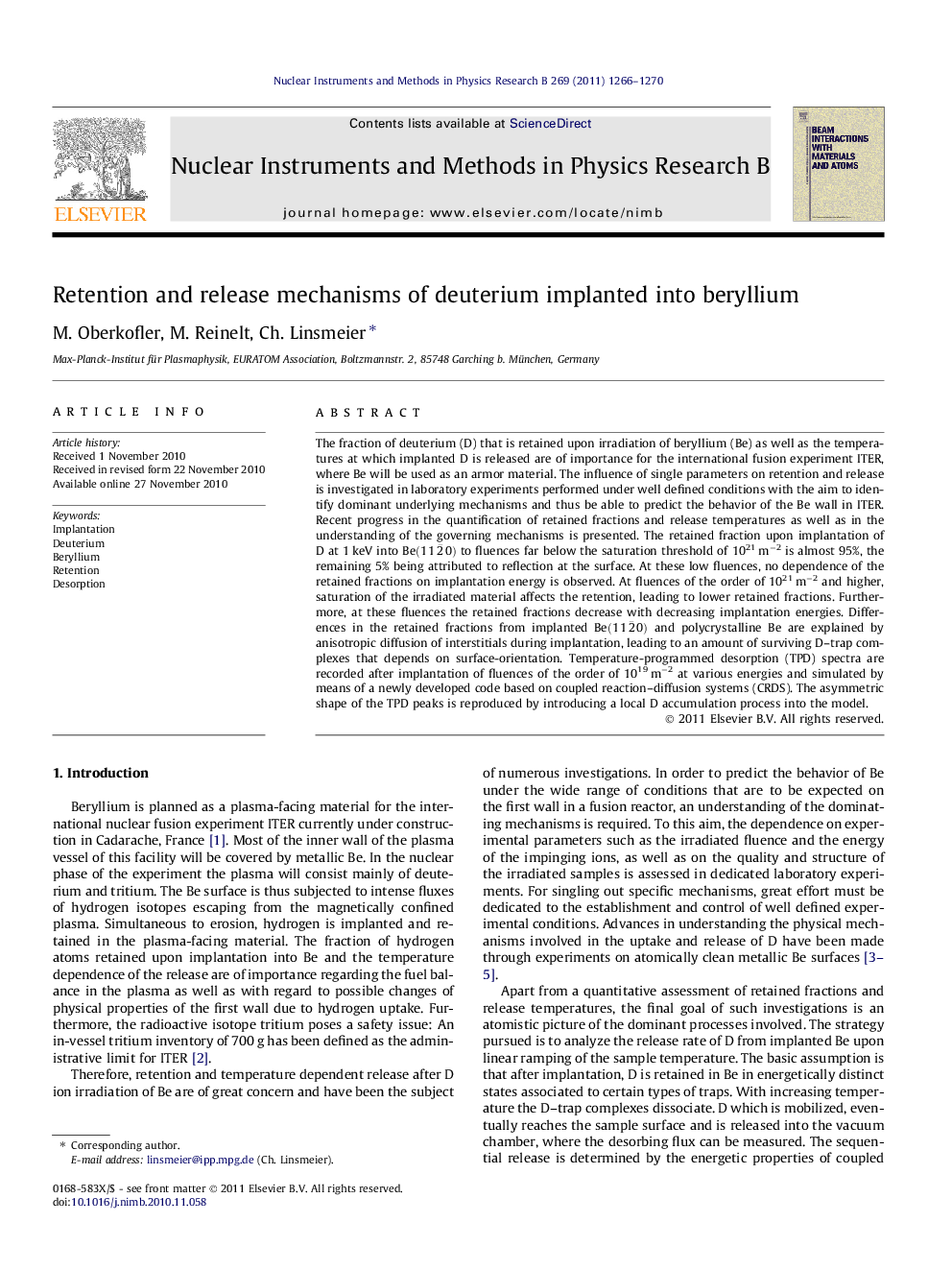| کد مقاله | کد نشریه | سال انتشار | مقاله انگلیسی | نسخه تمام متن |
|---|---|---|---|---|
| 1683138 | 1010492 | 2011 | 5 صفحه PDF | دانلود رایگان |

The fraction of deuterium (D) that is retained upon irradiation of beryllium (Be) as well as the temperatures at which implanted D is released are of importance for the international fusion experiment ITER, where Be will be used as an armor material. The influence of single parameters on retention and release is investigated in laboratory experiments performed under well defined conditions with the aim to identify dominant underlying mechanisms and thus be able to predict the behavior of the Be wall in ITER. Recent progress in the quantification of retained fractions and release temperatures as well as in the understanding of the governing mechanisms is presented. The retained fraction upon implantation of D at 1 keV into Be(112¯0) to fluences far below the saturation threshold of 1021 m−2 is almost 95%, the remaining 5% being attributed to reflection at the surface. At these low fluences, no dependence of the retained fractions on implantation energy is observed. At fluences of the order of 1021 m−2 and higher, saturation of the irradiated material affects the retention, leading to lower retained fractions. Furthermore, at these fluences the retained fractions decrease with decreasing implantation energies. Differences in the retained fractions from implanted Be(112¯0) and polycrystalline Be are explained by anisotropic diffusion of interstitials during implantation, leading to an amount of surviving D–trap complexes that depends on surface-orientation. Temperature-programmed desorption (TPD) spectra are recorded after implantation of fluences of the order of 1019 m−2 at various energies and simulated by means of a newly developed code based on coupled reaction–diffusion systems (CRDS). The asymmetric shape of the TPD peaks is reproduced by introducing a local D accumulation process into the model.
Journal: Nuclear Instruments and Methods in Physics Research Section B: Beam Interactions with Materials and Atoms - Volume 269, Issue 11, 1 June 2011, Pages 1266–1270